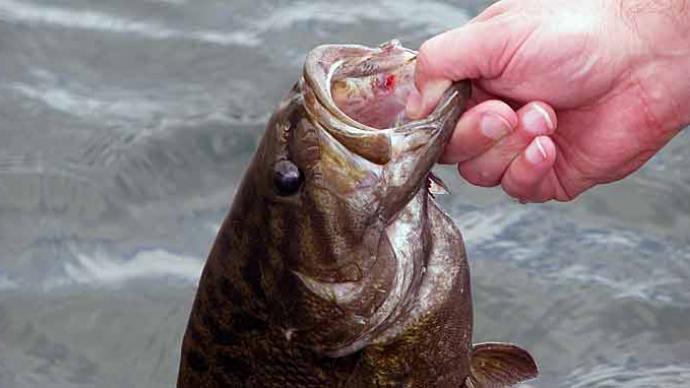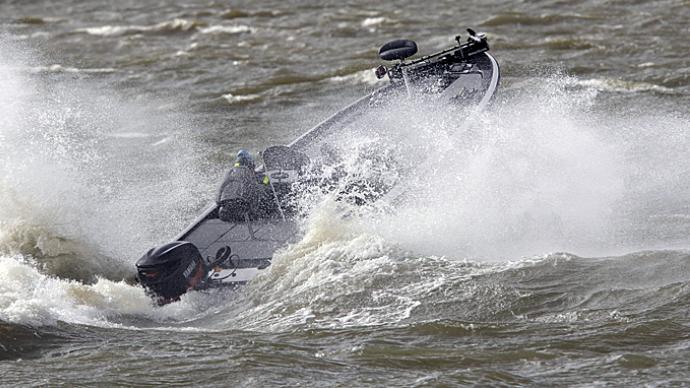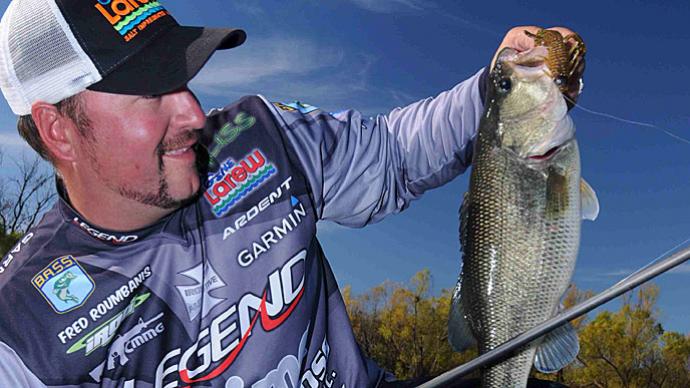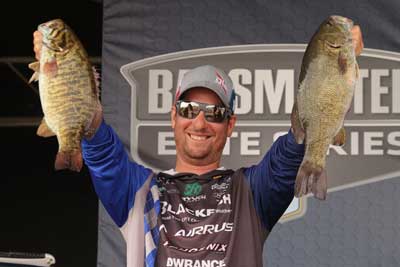
If you don’t like the weather, wait five minutes. That saying, or something similar, is popular with residents of many locales. And for the most part, it’s true. Weather systems come and go, bringing storms, precipitation, clouds, or clearing skies. But the wind is a constant among changing conditions.
Bassmaster Elite Series angler Austin Felix has dealt with his fair share of windy days. The former University of Minnesota collegiate national championship angler won the 2022 Elite Series stop at South Dakota's Lake Oahe, which is buffeted by prairie winds most days. In addition, he routinely battles wind on his home waters of Lake Minnetonka and Mille Lacs in Minnesota and his favorite fishing holes in New York.
Wind makes everything on the water more difficult. Boat control is a constant challenge, and casting takes extra work. It can chill you to the bone and turn strong legs to rubber after a day of standing in a pitching vessel. But there is a silver lining in those dark clouds. Felix found it by embracing, rather than fighting, the wind.
Setting The Stage
Most anglers agree that fishing in the wind can be a hassle. But it’s not all bad. It encourages bass to bite and consolidates them in predictable places.
Wind affects the three most popular species of bass — largemouth, smallmouth, and spotted — differently. Largemouth, for example, embrace low-light conditions, whether the result of wind-driven waves kicking up silt to create mud lines, stain the water, or ruffle the surface to block sunlight. It's the opposite of the others. "Spots are a lot like smallmouth in that they are visual feeders," Felix said. "So, they like it calm so they can see, pick out the bait."
Felix notes an exception for springtime smallmouth, especially on large bodies of water such as the Great Lakes. "[Wind is] significant early in the year because it pushes the warm or cold water around,” he said. He often notices it on Sturgeon Bay, an appendage of Lake Michigan's Green Bay, which has a reputation for producing giant smallmouth.
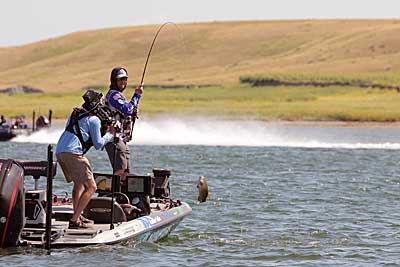
Water in the bay is sheltered, giving it the chance to warm. But it's susceptible to being displaced by denser and colder main-lake water pushed into the bay by the wind. In addition, the location of the warmer water, which is more attractive to springtime smallmouth, can change daily, depending on the wind’s strength and direction. “You have to figure out where that warmer water is,” Felix said. “And once you find it, there they are, giant schools [of smallmouth]. They move around strictly because of the wind.”
Windblown banks and points are productive places to fish. But there's a common misconception about the reason behind it. The wind doesn't push bass or baitfish there, as many anglers in the past believed. Instead, the wind moves the tiny helpless organisms that the baitfish eat. And the links in the food chain follow in turn.
Wind creates current, too. You'll most often find the narrow openings between points or shore and a nearby island at the end of points and in saddles. While only viable when the wind blows, the current pushes the aforementioned microscopic organisms, and the baitfish follow them. Bass will wait in the eddies that form for an easy meal.
While the benefits of wind-driven waves are easy to see in shallow water, Felix says they affect bass in deep water, too. He believes they calm them but not necessarily by making the presence of your boat more difficult to sense. “I think they feel they are hidden better, so they are more confident,” he said.
Changing Your Presentations
One size fits all remedies are few and far between in bass fishing. Instead, small adjustments to location, tackle, and presentations often lead to big successes. It’s no different when it comes to fishing in the wind. And it starts with being flexible.
Felix said wind plays different roles depending on the pattern you’re pursuing. That was the situation in early March 2022, when he competed at the Bassmaster Classic on Lake Hartwell, an impoundment shared by South Carolina and Georgia. “In the morning on the ditch bite, it’s helpful,” he said the day before the competition began. “But I'm probably going to spend a lot of time dock fishing, so I don't want wind. Even a little ripple makes it much harder to get [your lure] in there.”
Ripples turn into ramps when it’s time to skip a lure across the water’s surface to reach spots well under overhanding cover, such as the docks that stand along much of Lake Hartwell’s shore. No matter how on-target your skip cast begins, your lure can be quickly redirected into an off-target direction.
But there are times when wind-driven ripples and waves can improve presentations. That's no truer than when throwing reaction lures, which make a commotion and cover water quickly. Those surface disturbances reduce the amount of light that enters the water, creating a situation that makes bass more comfortable, aggressive, and inclined to travel farther to chase down your lure. “It’s a huge key early in the year or whenever you are throwing something that you are trying to get them to react to,” Felix said.
Working With Wind
Finding bass in windy conditions is only the start. You need to be able to fish for them, too. Shallow-water anchors and modern trolling motors, which will hold your boat in one spot with the touch of a button, have helped tremendously. But Felix said you could do more to make fishing in the wind easier.
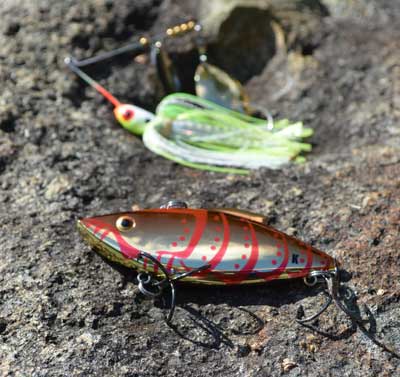
Felix prefers to fish into the wind whenever possible, especially with a co-angler, whose casting tournament rules can regulate directions. “[If you fish with the wind] you hit spot lock, then all of the sudden he's pointed where the fish are, and you are throwing over his shoulder,” he said.
Felix takes the same approach when flipping for bass tucked inside aquatic vegetation beds. "Then when I catch a fish, if I’m screwing around the wind is not going to blow me over the fish,” he said. “It will blow me back.” It’s the same scenario when fishing a dock, he said. If you allow the wind to blow your boat into it while you're culling or digging out a new soft-plastic lure, you've significantly reduced or eliminated an opportunity to catch another bass from under it, at least in the immediate future.
Wind makes casting difficult, especially when presentations demand that you cast into it. But there are some ways you can work around it. And the biggest one is switching to a spinning rod. Without an educated thumb riding on the spool, sending a lure into the wind with a baitcasting reel will likely end in backlash. Switch to a spinning rod, and that concern is gone.
Try tying on a heavier lure if you need or still want to use a baitcasting setup. It'll cut through the wind easier. Or try an aerodynamic one. A lipless crankbait, for example, flies much easier than a spinnerbait, whose blades act like a kite.
While your goal is to cast into the wind, it doesn't have to be a direct assault. Cheat a bit by quartering your casts. If you can position your boat to one side of the cover or structure, you're fishing, and you can cast slightly across the wind even if you're still slightly downwind of it.
Adjusting your rod's action — how it bends along its blank while under load — can help to cast in the wind. For example, moderate or slow-action rods bend along more of the blank and require less effort to load, allowing you to lob lures forward instead of snapping them with a fast-action rod. That generates more casting power, pushing your lure through the wind.


